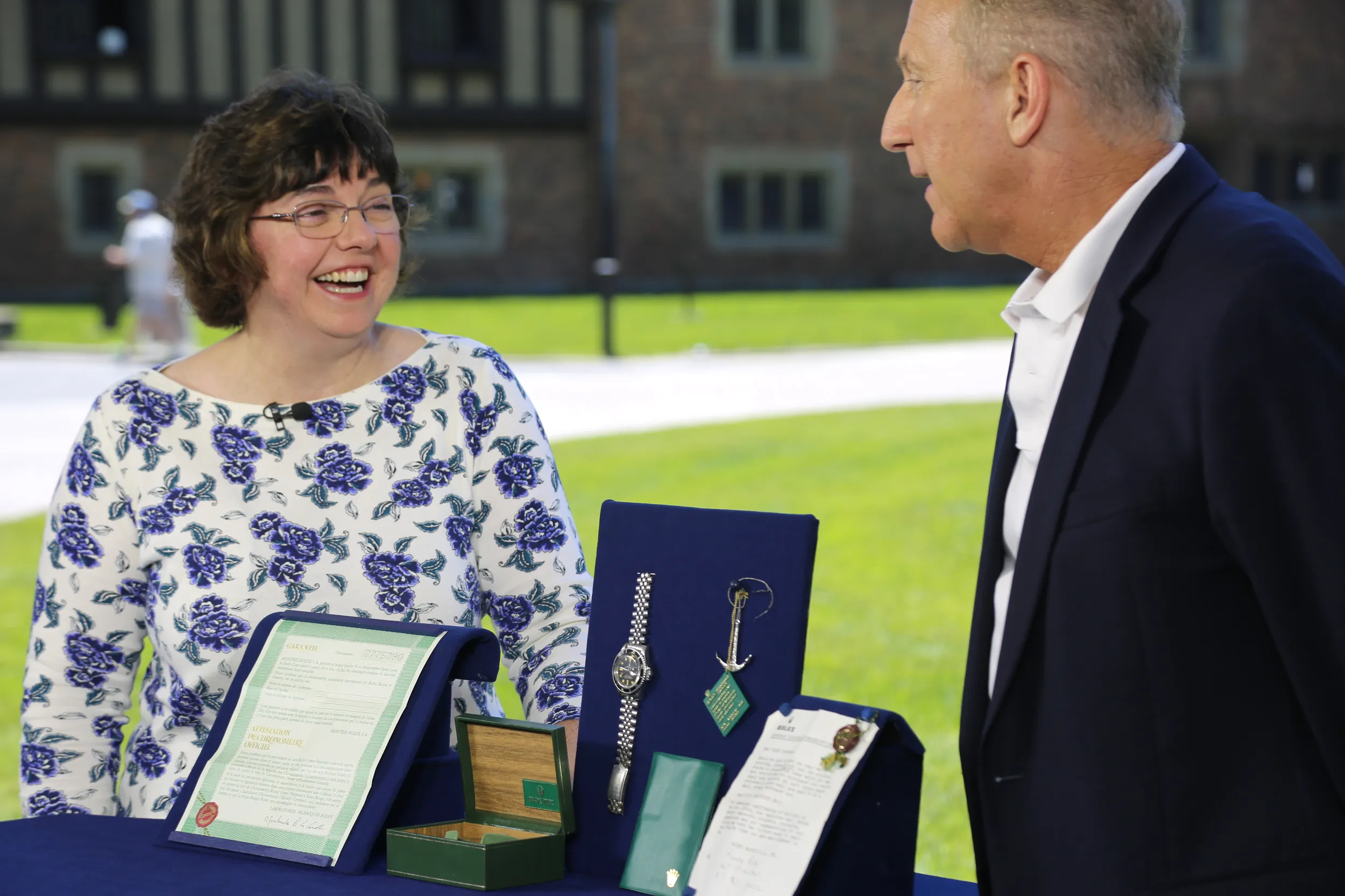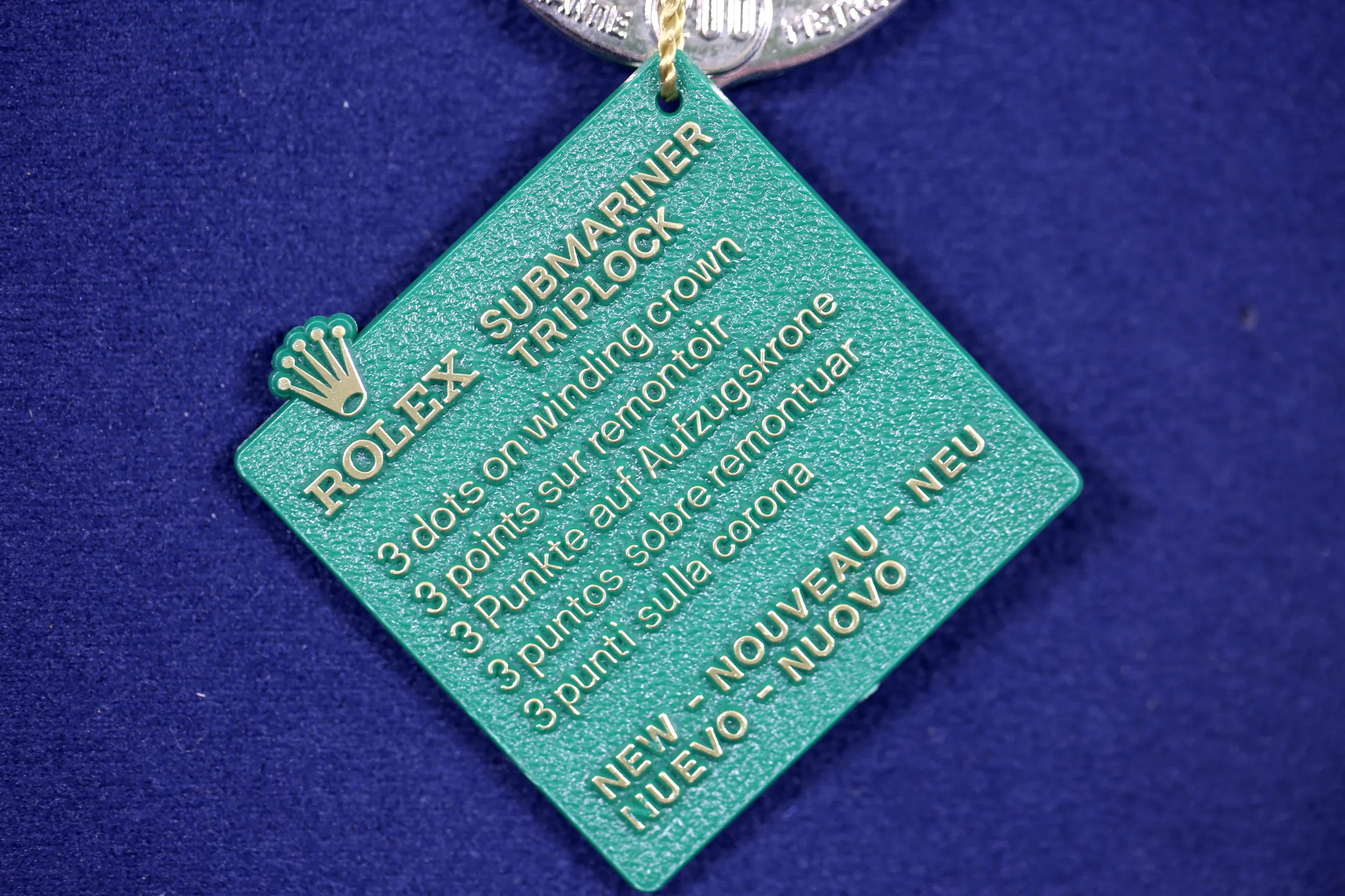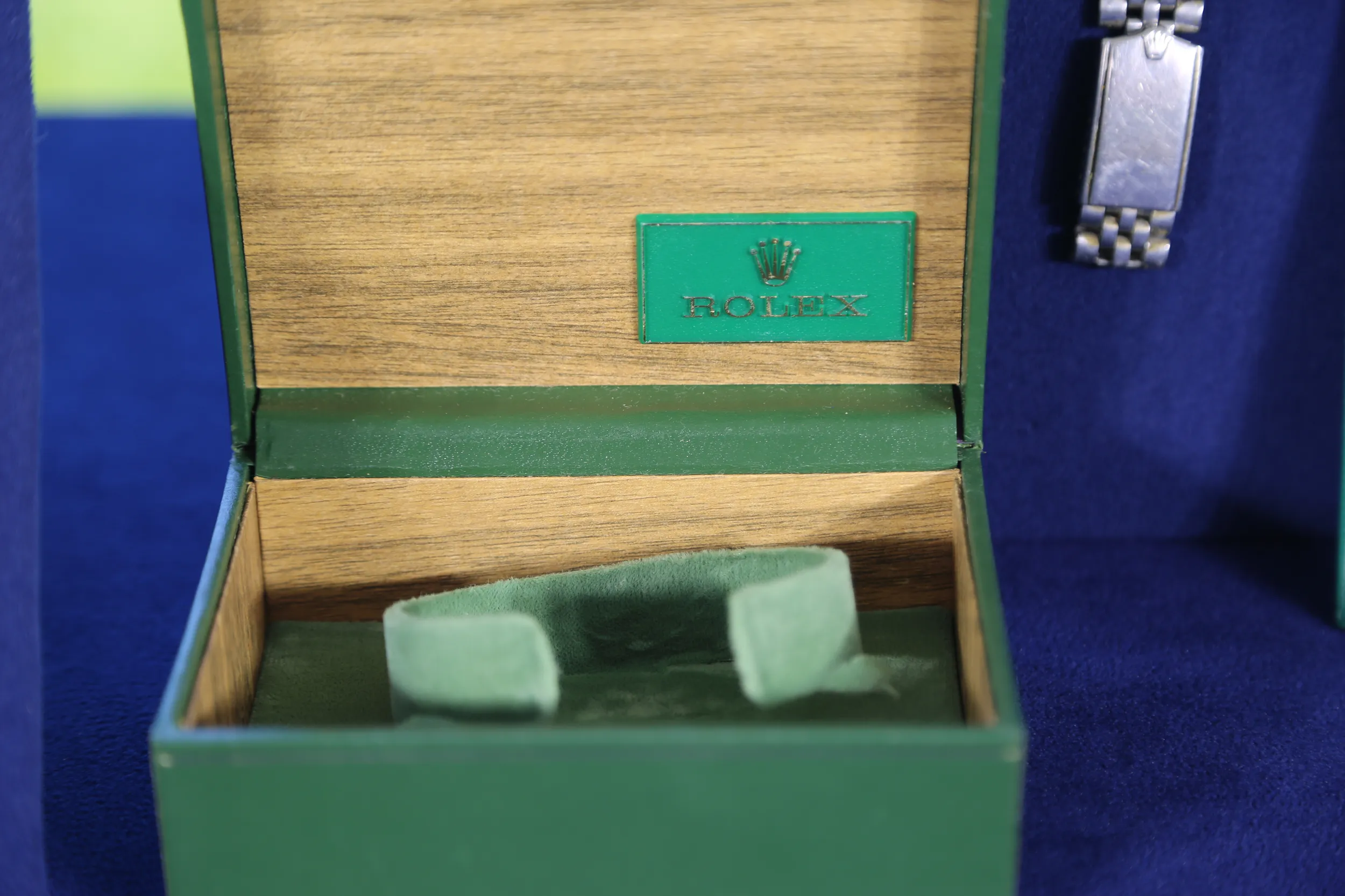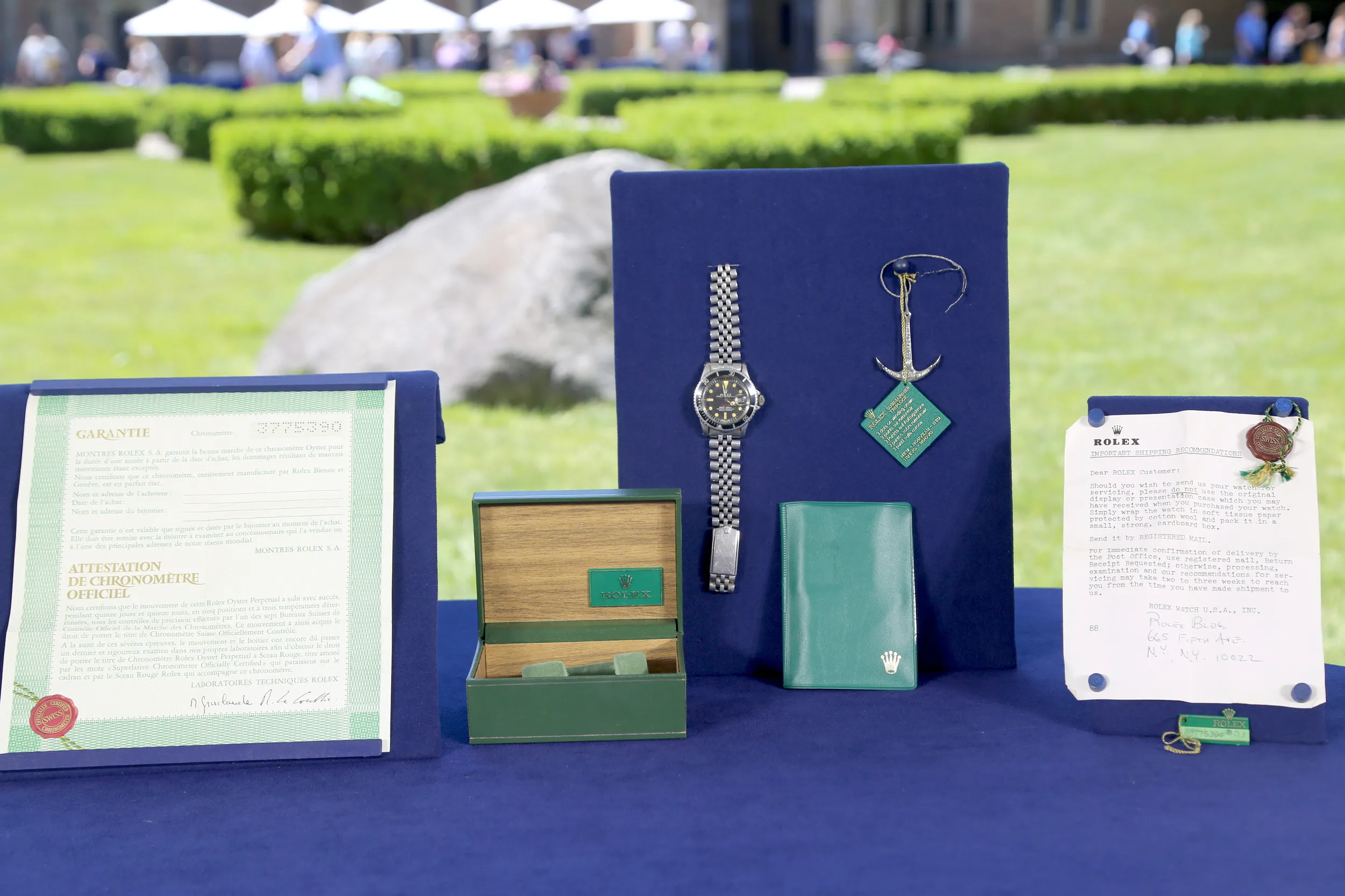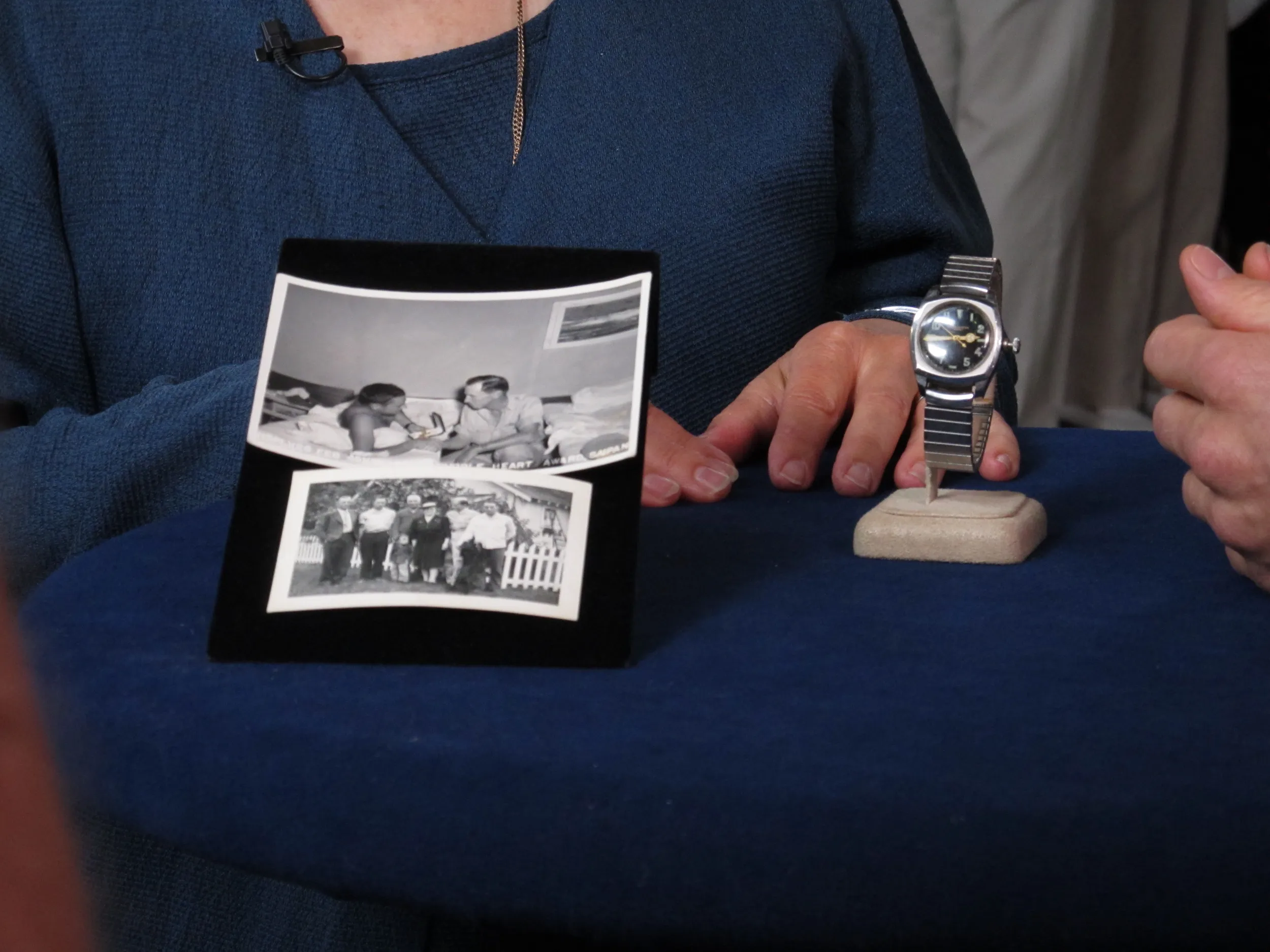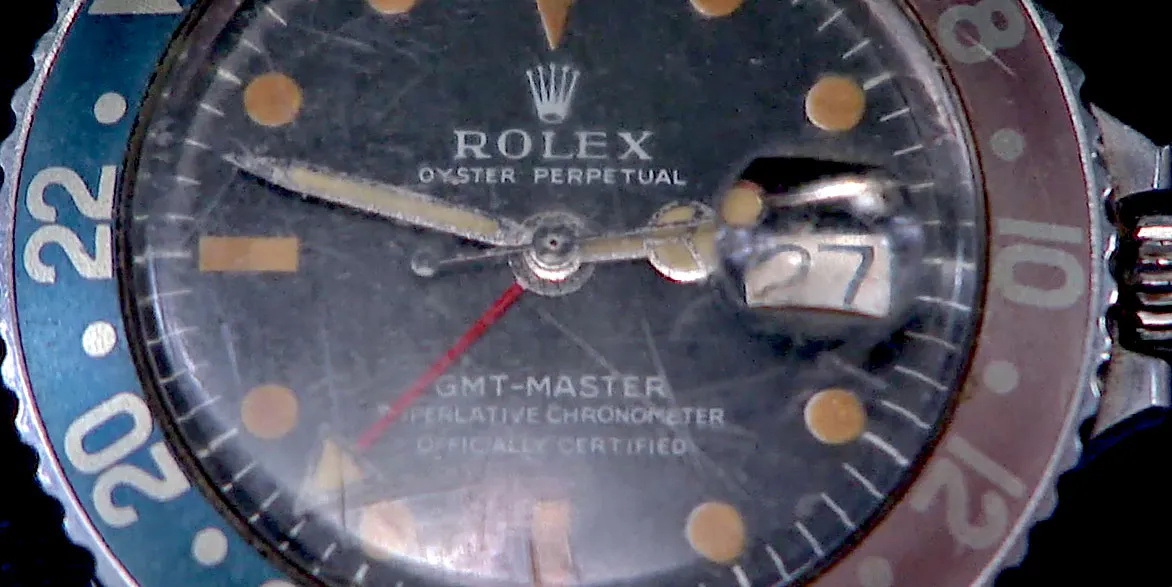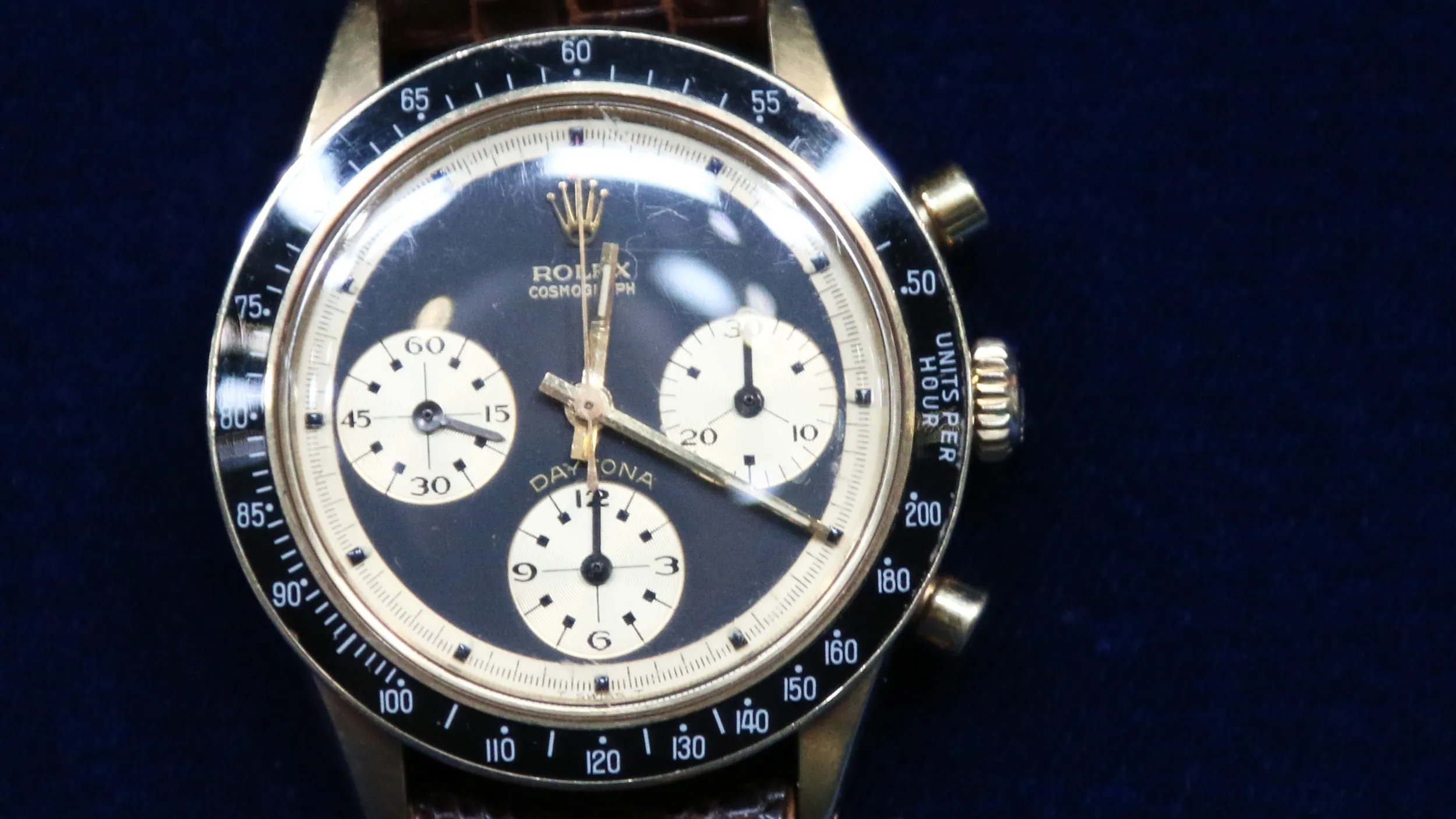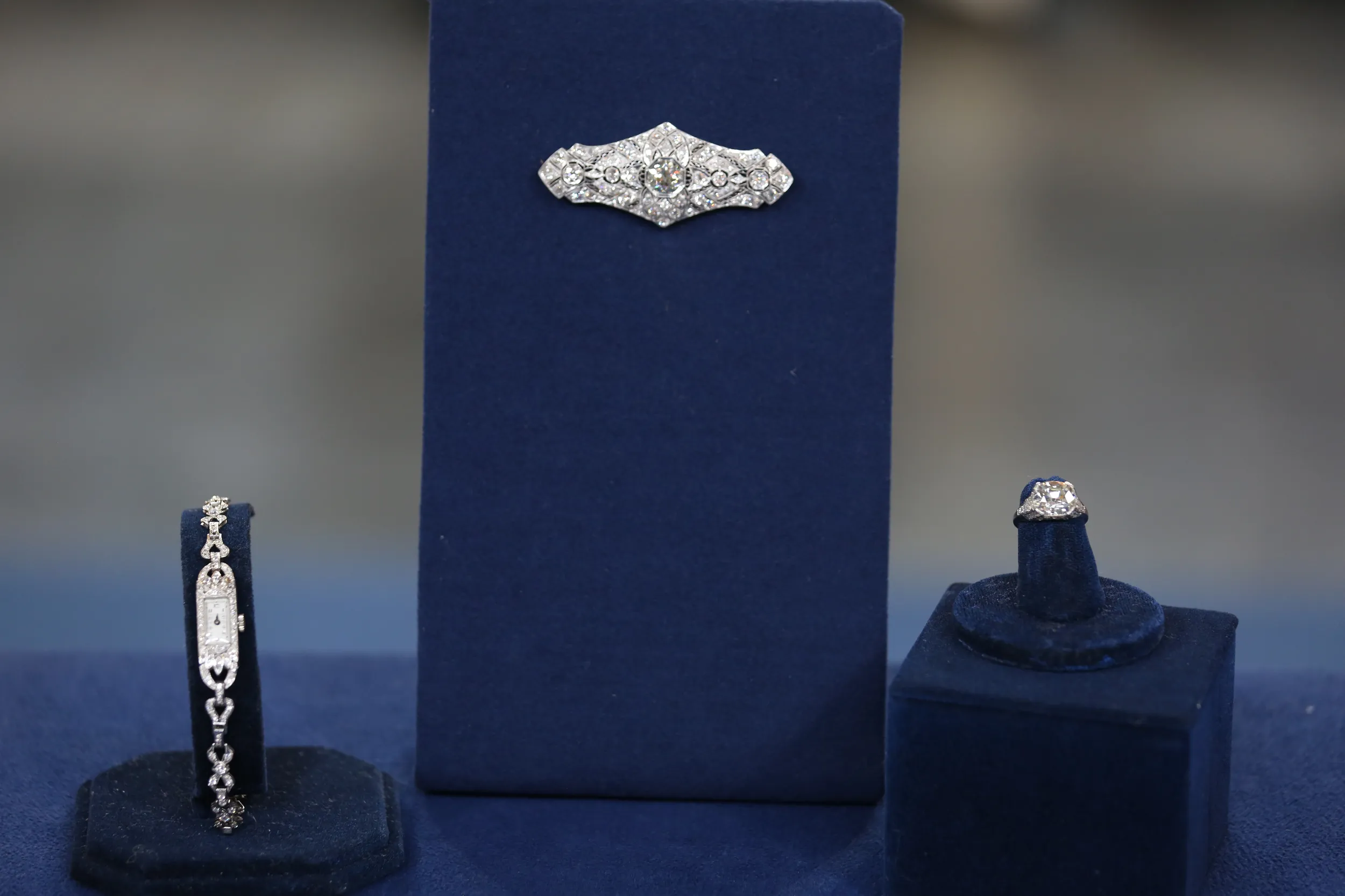APPRAISER: Tell me a little about your dad, why you brought his watch, and the story.
GUEST: He wore this for several years. I'm not sure when exactly he bought it. He worked in Alaska on the pipeline, and he wore this for years and years. And about 10 or 15 years ago, he gave it to me to potentially give to one of my kids. But I need to repair it, or at least get maintenance done on it.
APPRAISER: And you brought it here to find out what?
GUEST: Is it worth repairing?
APPRAISER: Okay. The watch is a Rolex Submariner. It's a model 1680. So these watches are incredibly popular now. This watch was made in the year 1974. And what's incredibly interesting about it is, he kept every single thing he got with it. So, when you would have walked out of the store in 1974, you would have had the watch. You would have had the box that it came with. You would have had a hand tag here which had the serial number on it. That serial number would have matched the serial number right here on the warranty. There would have been this little anchor, meaning Oyster, meaning it was waterproof. And this little green tag, which tells you that it's a screw-down crown, and that you would have to screw it down. And this is just a little piece of green plastic with the Rolex insignia on it. And this would have housed the warranty and paperwork when that was originally sold. The original warranty here is written in French. Rolex is a Swiss company. Warranties would be done in different languages, depending on where they were sold in the world. Generally, because the Submariner was a work watch, it came on a different bracelet, called the Oyster bracelet. It was, instead of the links being small like this, they were larger and flat. Because it's a, it's a time period-correct bracelet, it probably was just factory-installed. He may have just said, "Oh, I like the other bracelet," and the dealer just would have switched it. So what makes the watch interesting is, this is called a feet-first dial. So when it talks about how waterproof the watch is, on the dial down here, the feet are before meters. And that makes it very valuable and desirable. Then the word "Submariner" is written in red instead of in white, and that was only done for a few years, and that makes it much more desirable. The tritium hour markers, which, you see these beautiful golden markers, they were originally white, and the tritium was what Rolex and everybody used during the 1970s to make the watch luminescent. And they've gotten the finest color of sort of a honey gold. So you add the box, the papers, the tags, the sticker, everything completely original, the dial being in fantastic condition, and you've got a watch today in 2018 that would very easily sell on the retail market for $28,000.
GUEST: (laughs) Okay, so, yes, I have to get it repaired.
APPRAISER: I think it's probably worth spending the money to get it repaired, yes. On a watch like this, Rolex will replace any items that are not up to par. So the dial would actually have to be replaced. So it has to really be repaired in the secondary market, because the dial alone is probably $6,000 to $10,000. So to do the repair on the watch, it probably would cost somewhere between $900 and $1,400. And then, in total running condition, it would probably increase the watch to maybe $32,000.
GUEST: Okay.
APPRAISER: Although a lot of collectors would prefer to buy it exactly like it is, and have that work done themselves, so they know exactly what was done.


